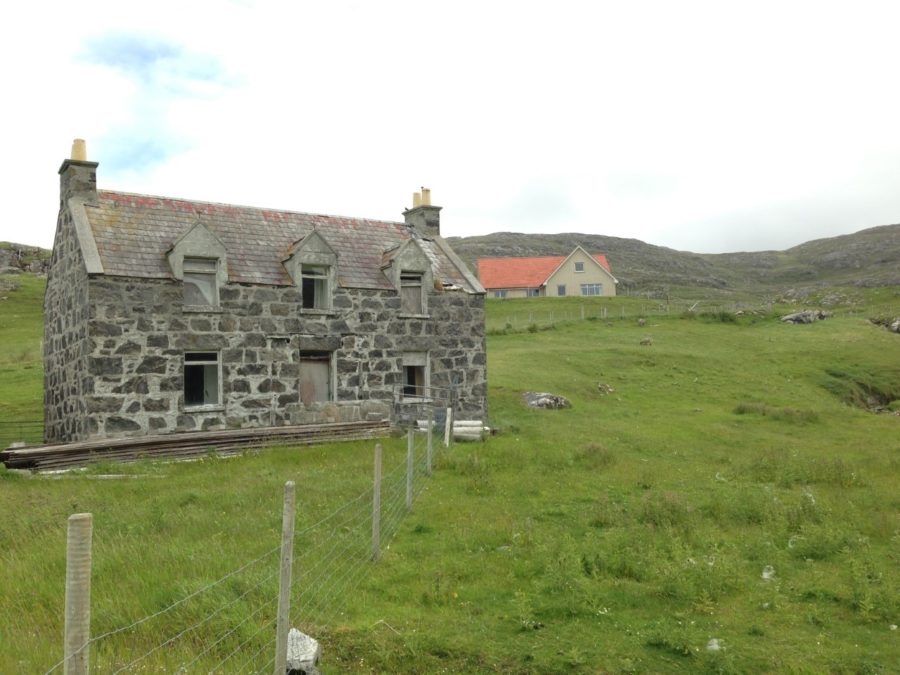Flat VAT! Flat VAT now!
Perhaps the most significant contribution builders and built environment professionals can make to the urgent task of fighting the trashing and degradation of the planet is to fight the building industry’s love of obsolescence – its concentration of what they call “dealflow”, where the economic system is set to fund shiny meretriciousness, that falls apart, gets cowped into a landfill site with its newbuild replacement then funded, out our taxes or direct out our pocket, on a regular, business-friendly cycle.
A key structural lever is the massive tax-break given to the residential sector, where demolition and newbuild is zero-rated, and repair and upgrading penalised with 20% VAT. I have campaigned since 2003 to introduce a “Flat VAT” level playing field, for all the reasons set-out below, while secretly thinking that what is really needed is the situation reversed – the retrofit tax break for the make-do-and-mend that needs to assist us fight this emergency, the 20% for newbuild.

Current Situation
VAT on repair is rated at 20%, demolition and new-build at 0%. Though there are minor exemptions – which, in themselves, add to bureaucracy and red-tape – the net effect is very significant economic leverage that encourages the maximum-carbon-use replacement, rather than the minimum-impact repair, of our existing building stock.
What Harmonising VAT Across Construction would Achieve
1. Employment: repair is more labour-intensive, with a larger proportion of every £ spent going on labour, lesser on materials; so a shift in emphasis from new-build would create jobs.
2. Reduction in the Black Economy: lower rates of VAT for repairs and maintenance reduces the incentive to use the black economy, so reducing illegal activity and raising new tax income.
3. Red-tape reduction: the complexities of exemption, and bureaucracy of application, adds to the uncertainties and difficulties around building, and the costs of such bureaucracy disincentives development.
4. Regeneration: high rates of VAT are a brake on regeneration, discouraging new economic activity.
5. Sustainability: given the embodied energy in existing building stock, the relatively long-life of traditional buildings (compared to 30-50 years for new) and the current, circa. 0.5% replacement rate of our building-stock, the repair and upgrading of existing building stock is the primary weapon in the built environment’s fight against climate change.
6. Heritage: the Heritage Community, denied economic balance, often have to resort to sentiment to save and re-use buildings. The removal of the imbalance would remove a prime irritant between the development and heritage communities.
7. New Homes: according to the Scottish Empty Homes Partnership there are 40,000 long-term empty private-sector homes in Scotland, whose average renovation cost is £6,000 - £25,000, against a newbuild cost of maybe £129,000 (as well as countless useable flats designated as retail, above High Street shops). Flat VAT offers a simple lever to assist them back into use, at low cost, in existing centres and supporting and benefiting from existing infrastructure.

Campaigns and Support
Campaigns for harmonised VAT have been launched by bodies right across the building industry including: RIBA, RIAS, UK Federation of Builders, English Heritage, SAVE Britain’s Heritage, the Heritage Link, the Built Environment Forum of Scotland and the Construction Products Association, with the RICS – Royal Institution of Chartered Surveyors having researched economic activity and tax take.
Support has also come from inside the UK Parliament, from then Deputy Prime Minister, John Prescott, in 2005, and from the Parliamentary Select Committee in 2006.
Tax Take
A Flat VAT of 5% across all homes reduces the take from repair and renewal but, against this, gains from: newbuild, additional repair activity, and income tax from the new jobs created. Analysis by the RICS suggests a time of adjustment, then balance, under a harmonised 5% rate. Higher harmonised rates would bring increased tax-takes.
